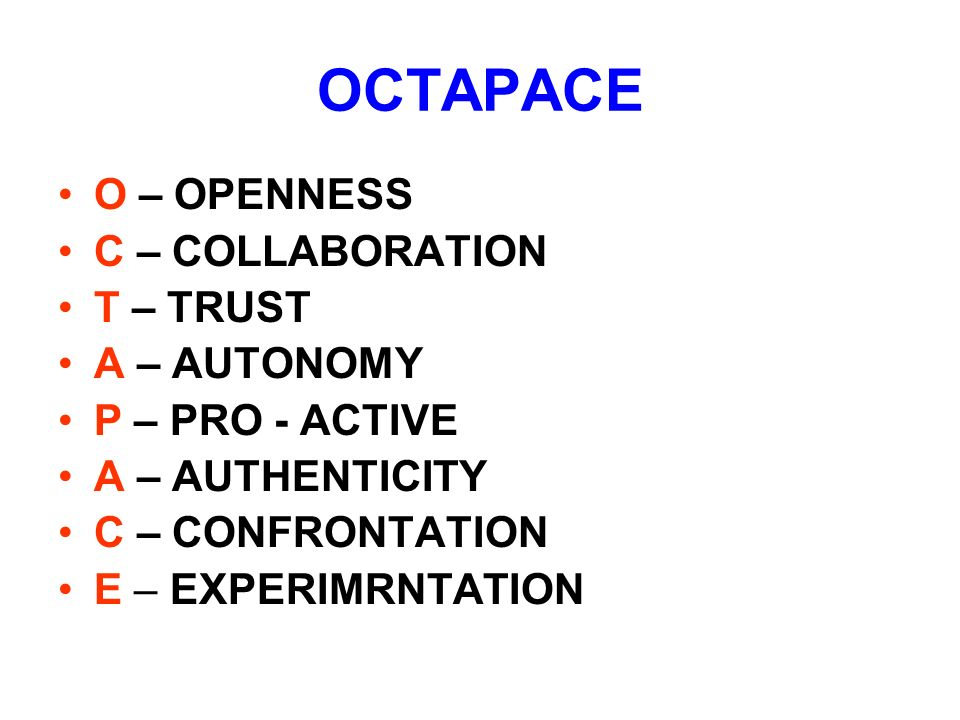
Organisation and OCTAPACE Culture
- By Lucid Team
- 02 March 2023

Organizational Culture is the collective behaviour of humans who are part of an organization and the meanings that the people attach to their actions.
Organizational culture is composed of several characteristics that range in priority from high to low. Every organization has a distinct value for each of these characteristics, which, when combined, defines the organization's unique culture. Members of organizations make judgments on the value their organization places on these characteristics and then adjust their behavior to match this perceived set of values.
Every organization develops and maintains a unique culture, which provides guidelines and boundaries for the behavior of the members of the organization. Let's explore what elements make up an organization's culture.
OCTAPACE CULTURE
OCTAPACE CULTURE includes ethics, values, beliefs, attitudes, norms, ethos, climate, environment and culture. The eight dimensions of OCTAPACE culture are openness, confrontation, Trust, Authenticity, pro-action, autonomy, collaboration and experimentation which are essential for a strong and successful organization. A culture with OCTAPACE values has the greater chance of achieving high involvement and satisfaction, team work, growth and free flow of communication within the organization The most important aspect of organizational culture are the values it practices.
Eight values usually examined to develop the profile of an organizational culture that is called octapace it OPENNESS, CONFRONTATION,TRUST,AUTHENTICITY,PROACTIVELY,AUTONOMY,COLLABORATION,AND EXPERIMENTING.
a) Openness – It signifies the transparent environment in the oragnization. The degree of openness of the orgnisation will be an important factor in determining the nature of the various dimensions of HRD being designed, as well as the way in which these dimensions should be introduced.
Freedom to communicate, share and interact without hesitation. Receiving feedback from customers and giving ideas and suggestions to team members.
OUTCOME: It helps to improve implementation of systems and innovation& free interaction among team mates , leaders and top authority and clarity in setting objectives and common goals.
b) Confrontation – The term signifies the actual problems which team face in the day to day work. It implies to face the problem and find the best solutions to get over it rather than stepping back to escaping the problems. Facing the problems and challenges boldly and not shying away is the main theme of Confrontation. If an organization encourages people to recognize a problem, bring it to people concerned, explore with them to under it and search possible ways of dealing with it.
OUTCOME: Improved problem solving and clarity and Team discussions to resolve problems
c) Trust – The trust factor come with Openess which include maintaining the confidentiality of information shared by others and company . If the level of trust is low, the various dimensions of HRS are likely to be seen with suspicion and therefore the credibility of the system may go down. in such a case the system if introduced may become a vital and cease to perform the main functions for which it meant.
OUTCOME: Higher empathy, timely support, reduced stress and reduction and simplification of forms and procedures. d) Authenticity : Authenticity is the congruence between what one feels and says. It is the value underlying trust. Authenticity is reflected in the narrowest gap between the stated vales and the actual behavior. This value is important for the development of a culture of mutuality.
OUTCOME: Sharing of feelings freely to improve interpersonal communication and reduced distortion in communicationis
e) Proactive - Taking initiative, preplanning and taking preventive action is the measures of term Proactive. Organisation must be proactive in terms of their planning. They must be ready for future.
Proaction means anticipating issues in advancing to take advantage of this undertaking conflict or responding to needs of the future in fact creating the future. OUTCOME: Taking and planning actions at immediate concerns.
f) Autonomy – Autonomy is the willingness to use power without fear and helping other to do same. Basically Autonomy is all about Using and giving freedom to plan and act in one’s own sphere. Organisations must avoid Autocratic type of environment and give chance to team to use their powers in positive way.
OUTCOME: Develops mutual relationships, reduce reference made to senior people
g) Collaboration - involves working together in a team for a common cause. Individuals solve their problems by share their concerns with one another ands prepare strategies working out plan of actions and implement them together.
OUTCOME: Timely work, improved communication, resource sharing
h) Experimenting – It Involves using and encouraging innovate approaches to solve problems. It is the value which emphasizes the importance given to innovating and trying out new ways of dealing with problems in the organisations.
OUTCOME: Development of new product, methods, and procedures A profile of an orgn on these aspects may help to decide what elements of HRS should be introduced in what sequences in the organization.